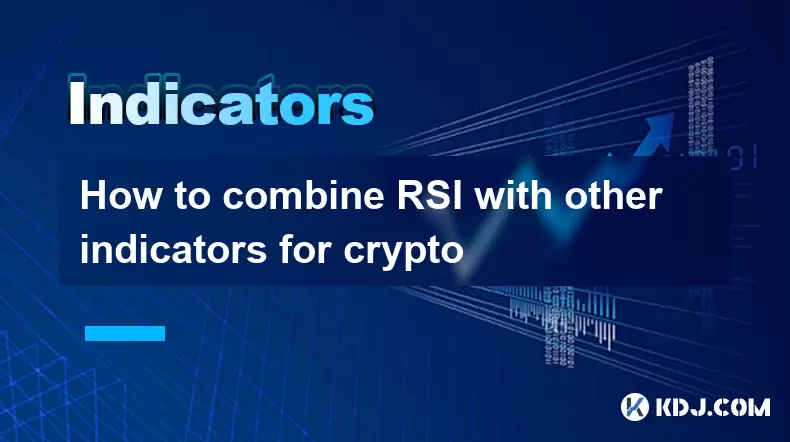-
 Bitcoin
Bitcoin $119,161.9671
1.52% -
 Ethereum
Ethereum $2,995.0722
2.34% -
 XRP
XRP $2.8555
5.32% -
 Tether USDt
Tether USDt $1.0002
0.00% -
 BNB
BNB $692.9308
1.48% -
 Solana
Solana $162.9611
1.87% -
 USDC
USDC $0.9999
0.00% -
 Dogecoin
Dogecoin $0.2014
2.84% -
 TRON
TRON $0.3032
0.90% -
 Cardano
Cardano $0.7464
6.51% -
 Hyperliquid
Hyperliquid $49.1533
5.71% -
 Stellar
Stellar $0.4773
24.77% -
 Sui
Sui $3.4979
3.93% -
 Chainlink
Chainlink $15.8552
6.01% -
 Hedera
Hedera $0.2401
23.85% -
 Bitcoin Cash
Bitcoin Cash $510.0474
0.97% -
 Avalanche
Avalanche $21.5550
4.82% -
 UNUS SED LEO
UNUS SED LEO $9.0389
-0.47% -
 Shiba Inu
Shiba Inu $0.0...01340
2.27% -
 Toncoin
Toncoin $2.9910
0.62% -
 Litecoin
Litecoin $96.4406
4.34% -
 Polkadot
Polkadot $4.0359
4.59% -
 Monero
Monero $338.4759
2.80% -
 Uniswap
Uniswap $8.6460
4.01% -
 Dai
Dai $0.9999
0.00% -
 Ethena USDe
Ethena USDe $1.0007
0.03% -
 Pepe
Pepe $0.0...01254
3.26% -
 Bitget Token
Bitget Token $4.3969
0.79% -
 Aave
Aave $312.2641
3.98% -
 Bittensor
Bittensor $397.0731
4.17%
Best timeframe to use Bollinger Bands for Bitcoin
Bollinger Bands help Bitcoin traders identify volatility, overbought/oversold levels, and potential breakouts across various timeframes, from short-term scalping to long-term investing.
Jul 12, 2025 at 04:21 am

Understanding Bollinger Bands in Cryptocurrency Trading
Bollinger Bands are one of the most widely used technical analysis tools among traders, especially in volatile markets like Bitcoin (BTC). They were developed by John Bollinger in the 1980s and consist of a 20-period moving average with two standard deviation lines plotted above and below it. These bands dynamically adjust to price volatility, making them particularly useful for analyzing assets like Bitcoin that experience significant price swings.
The primary purpose of Bollinger Bands is to provide insights into market conditions such as overbought or oversold levels, potential breakouts, and volatility contraction or expansion. When applied to Bitcoin trading, understanding which timeframes work best with Bollinger Bands can significantly improve decision-making and strategy execution.
Why Timeframe Selection Matters for Bollinger Bands
Timeframe selection plays a crucial role when using Bollinger Bands for Bitcoin because the effectiveness of this indicator depends heavily on how well it aligns with the trader’s strategy and market context. Shorter timeframes may generate more signals but also come with increased noise and false alarms. Conversely, longer timeframes offer more reliable signals but may lag behind real-time price movements.
For instance, a 5-minute chart might show rapid band expansions and contractions due to short-term volatility, while a 4-hour or daily chart will reflect broader trends and stronger support/resistance zones. Choosing the correct timeframe ensures that traders avoid overtrading and can better interpret price action within the bands.
Popular Timeframes Used with Bollinger Bands in BTC Trading
- 1-minute and 5-minute charts: These are commonly used by scalpers who aim to profit from minor price fluctuations. However, Bollinger Bands on these timeframes can be misleading due to high volatility and frequent false breakouts.
- 15-minute and 30-minute charts: Suitable for day traders looking to capture intraday moves. These timeframes balance responsiveness and reliability, allowing traders to spot momentum shifts without excessive noise.
- 1-hour chart: A popular choice for swing traders. The Bollinger Bands here often act as dynamic support and resistance, helping identify potential reversal points or breakout opportunities.
- 4-hour chart: This timeframe is ideal for traders seeking to capture medium-term trends. Band touches and squeezes on the 4-hour chart often precede strong directional moves in Bitcoin.
- Daily chart: Long-term traders and investors use this to assess overall volatility cycles. While not ideal for timing entries, daily Bollinger Bands help understand whether Bitcoin is in a trending or consolidating phase.
Each timeframe offers unique advantages and drawbacks depending on the trader's goals and risk tolerance.
How to Interpret Bollinger Band Behavior Across Timeframes
Interpreting Bollinger Bands effectively requires understanding their behavior across different timeframes:
- On shorter timeframes, price touching the upper band may indicate overbought conditions, but in fast-moving crypto markets, this can sometimes signal continuation rather than reversal.
- In contrast, on longer timeframes, repeated touches of the upper or lower bands often suggest strong trend momentum or impending reversals, especially when accompanied by volume spikes or candlestick patterns.
- Band width also matters — narrower bands imply decreasing volatility (Bollinger Squeeze), while widening bands indicate increasing volatility. This principle holds true regardless of the timeframe but manifests differently based on the chart being analyzed.
Traders should also pay attention to price rejection at the bands. If Bitcoin repeatedly bounces off the lower band on a 1-hour chart, it could signal a buying opportunity. Conversely, if it breaks through the upper band and continues upward, it may indicate a powerful bullish move.
Combining Bollinger Bands with Other Indicators
Using Bollinger Bands alone can lead to misinterpretation, especially in highly volatile assets like Bitcoin. Combining them with other indicators enhances accuracy and provides confirmation:
- Relative Strength Index (RSI): Helps confirm overbought (>70) or oversold (<30) conditions when price touches the bands.
- Volume indicators: Significant increases in volume during a band touch or breakout increase the likelihood of a valid move.
- Moving Average Convergence Divergence (MACD): Useful for confirming trend strength and direction after a Bollinger Band breakout.
- Fibonacci retracement levels: Can highlight key areas where price might react near the bands, offering precise entry or exit points.
By integrating multiple tools, traders can filter out false signals and make more informed decisions based on confluence between different indicators.
Practical Steps to Apply Bollinger Bands on Bitcoin Charts
To apply Bollinger Bands effectively to Bitcoin, follow these practical steps:
- Open your preferred crypto trading platform (e.g., Binance, TradingView).
- Select the BTC/USDT pair or any relevant trading pair you're analyzing.
- Click on the indicators menu and search for “Bollinger Bands.”
- Ensure the default settings are set to 20 periods and 2 standard deviations unless you have a specific reason to adjust them.
- Overlay the bands on your chosen timeframe chart (e.g., 1-hour or 4-hour).
- Observe how price interacts with the bands — look for touches, breakouts, and squeezes.
- Combine with other indicators as discussed earlier to validate signals before placing trades.
This step-by-step approach ensures that even novice traders can begin incorporating Bollinger Bands into their Bitcoin trading strategy with confidence.
Frequently Asked Questions
Q: Can I change the default settings of Bollinger Bands for Bitcoin?
Yes, the default settings (20-period SMA and 2 standard deviations) can be adjusted. Some traders prefer tighter bands (e.g., 1.5 standard deviations) on shorter timeframes to reduce false signals, while others extend the period to 50 for long-term analysis.
Q: Do Bollinger Bands work well in ranging markets for Bitcoin?
In sideways or consolidating markets, Bollinger Bands can be very effective. Price often oscillates between the upper and lower bands, providing clear mean reversion opportunities when combined with RSI or Stochastic indicators.
Q: Should I use Bollinger Bands on all timeframes simultaneously?
While it's possible to view multiple timeframes, it's generally better to focus on one or two key timeframes that align with your trading style. Using too many can cause confusion and result in conflicting signals.
Q: How do I know if a Bollinger Band breakout is genuine or fake?
A genuine breakout usually comes with increased volume, follows a Bollinger Squeeze, and is confirmed by other indicators like MACD or RSI divergence. Fakeouts tend to occur during low liquidity or news-driven volatility.
Disclaimer:info@kdj.com
The information provided is not trading advice. kdj.com does not assume any responsibility for any investments made based on the information provided in this article. Cryptocurrencies are highly volatile and it is highly recommended that you invest with caution after thorough research!
If you believe that the content used on this website infringes your copyright, please contact us immediately (info@kdj.com) and we will delete it promptly.
- Pumpfun's $500M ICO: Memecoin Mania or the Future of Funding?
- 2025-07-14 14:30:12
- Pump.fun's $PUMP Token Sale: A Wild Ride in the Memecoin Frenzy
- 2025-07-14 14:30:12
- Bitcoin Blasts Past $120,000 on Coinbase: All-Time Highs and What's Driving the Surge
- 2025-07-14 14:50:12
- Pump.fun's $500M ICO: Memecoin Mania or the Future of Fundraising?
- 2025-07-14 14:50:12
- BinanceUS, Altcoin, Price Jump: What's Pumpin' and What's Dumpin'?
- 2025-07-14 14:55:12
- Bitcoin: Buy the Dip Before the March 2028 Halving?
- 2025-07-14 12:30:11
Related knowledge

Advanced RSI strategies for crypto
Jul 13,2025 at 11:01am
Understanding the Basics of RSI in Cryptocurrency TradingThe Relative Strength Index (RSI) is a momentum oscillator used to measure the speed and chan...

Crypto RSI for day trading
Jul 12,2025 at 11:14am
Understanding RSI in the Context of Cryptocurrency TradingThe Relative Strength Index (RSI) is a momentum oscillator used to measure the speed and cha...

Crypto RSI for scalping
Jul 12,2025 at 11:00pm
Understanding RSI in the Context of Crypto TradingThe Relative Strength Index (RSI) is a momentum oscillator widely used by traders to measure the spe...

What does an RSI of 70 mean in crypto
Jul 13,2025 at 06:07pm
Understanding the RSI Indicator in Cryptocurrency TradingThe Relative Strength Index (RSI) is a widely used technical analysis tool that helps traders...

How to avoid RSI false signals in crypto
Jul 13,2025 at 06:21pm
Understanding RSI and Its Role in Crypto TradingThe Relative Strength Index (RSI) is a momentum oscillator used to measure the speed and change of pri...

How to combine RSI with other indicators for crypto
Jul 12,2025 at 08:35am
Understanding the Role of RSI in Crypto TradingThe Relative Strength Index (RSI) is a momentum oscillator that measures the speed and change of price ...

Advanced RSI strategies for crypto
Jul 13,2025 at 11:01am
Understanding the Basics of RSI in Cryptocurrency TradingThe Relative Strength Index (RSI) is a momentum oscillator used to measure the speed and chan...

Crypto RSI for day trading
Jul 12,2025 at 11:14am
Understanding RSI in the Context of Cryptocurrency TradingThe Relative Strength Index (RSI) is a momentum oscillator used to measure the speed and cha...

Crypto RSI for scalping
Jul 12,2025 at 11:00pm
Understanding RSI in the Context of Crypto TradingThe Relative Strength Index (RSI) is a momentum oscillator widely used by traders to measure the spe...

What does an RSI of 70 mean in crypto
Jul 13,2025 at 06:07pm
Understanding the RSI Indicator in Cryptocurrency TradingThe Relative Strength Index (RSI) is a widely used technical analysis tool that helps traders...

How to avoid RSI false signals in crypto
Jul 13,2025 at 06:21pm
Understanding RSI and Its Role in Crypto TradingThe Relative Strength Index (RSI) is a momentum oscillator used to measure the speed and change of pri...

How to combine RSI with other indicators for crypto
Jul 12,2025 at 08:35am
Understanding the Role of RSI in Crypto TradingThe Relative Strength Index (RSI) is a momentum oscillator that measures the speed and change of price ...
See all articles

























































































